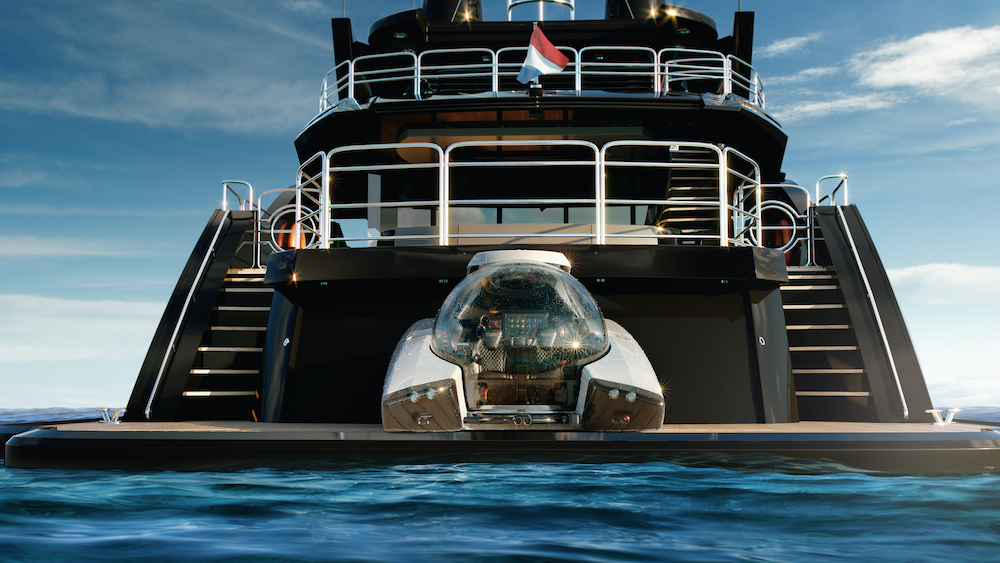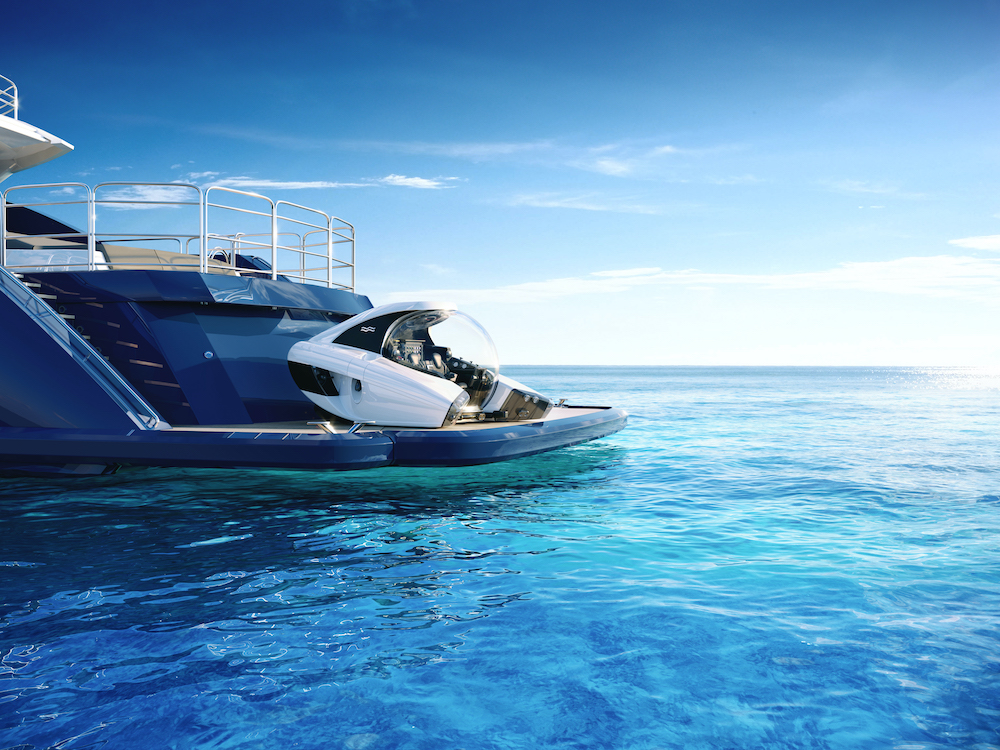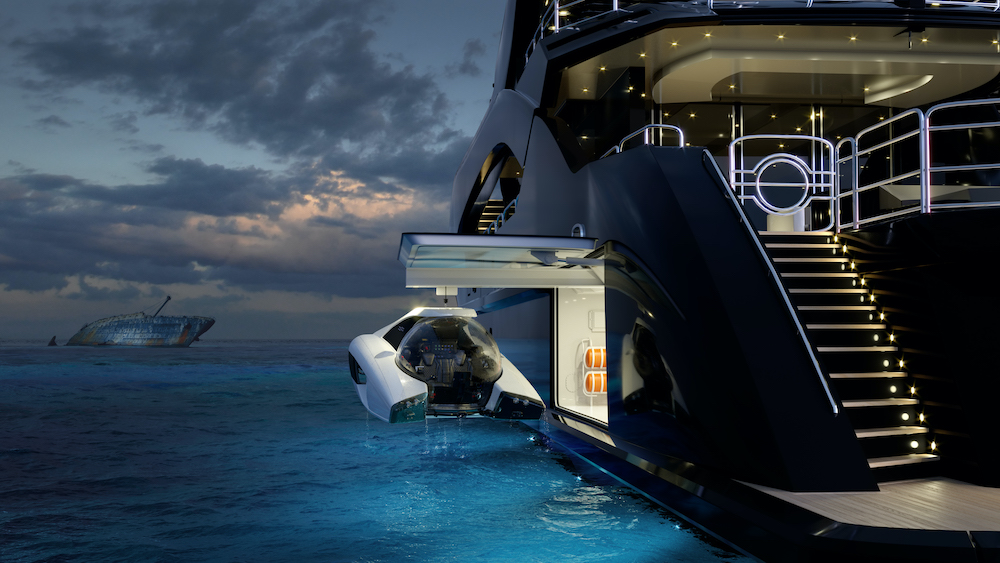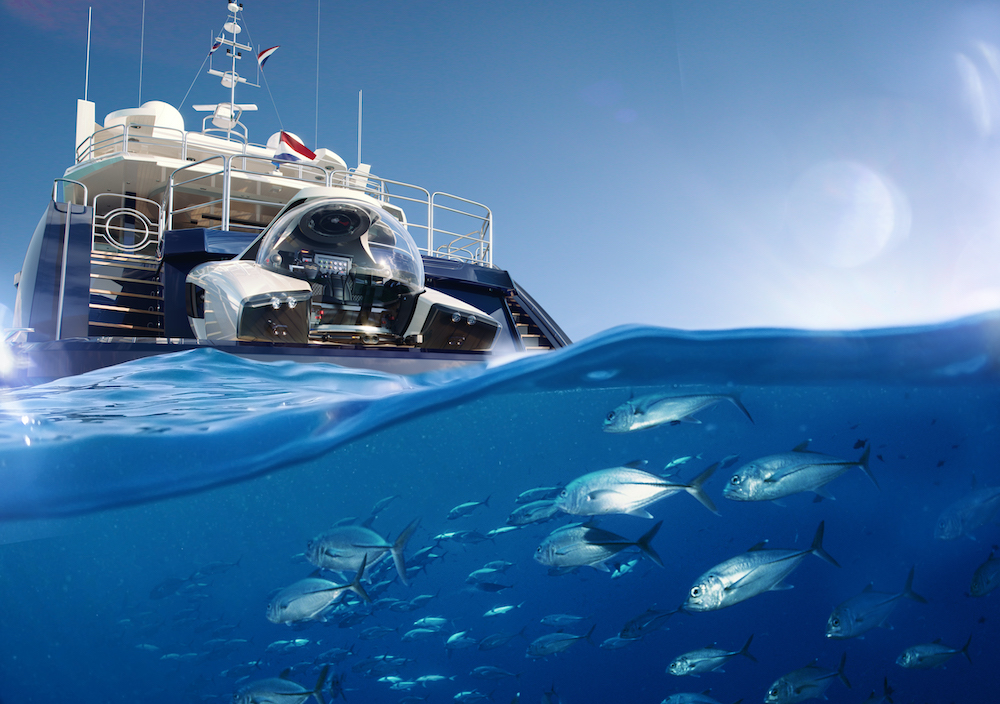Submarines and superyachts: the matchmaking process
Personal submarines are the latest toy on the wish list of many a superyacht owner.…
By Jenna Mehdi...
As project manager in Hill Robinson’s Special Projects Division, Philipp Schöpfer’s job role is nothing if not varied. The refit of superyachts to accommodate submarines is a service that has evolved over his four-year career at Hill Robinson, with clients increasingly looking for more from their yachting experience than to simply relax and unwind in luxury. Submarine exploration is an experience quite unlike any other, offering the chance to get up close and personal with new depths of the sea in total comfort. But, as we will learn from Philipp, adding one of these deep-sea explorers to your toy garage is not as straightforward as some might think.
When a client is looking to accommodate a submarine aboard their superyacht, Philipp’s first step is to make sure they have the full picture. “It’s very easy to buy a submarine, but integration aboard the mothership can be complicated and on-going operation can be time-consuming and expensive,” says Philipp. In terms of practical requirements, available space and lifting capacity are the primary considerations.
Despite their size, submarines are delicate pieces of equipment and are best stored in an enclosed space like a tender garage. If the submarine is to be stored out on the open deck, this must be strong enough to hold the sub’s weight for an extended period. Depending on the model, submarines can weigh anything from one to 16 tonnes, so the Hill Robinson team must also ensure the yacht’s crane has enough lifting capacity or that the necessary upgrades are made.
“On our last project we made sure both the mothership and support vessel were able to carry the submarine,” says Philipp. “We investigated every aspect in meticulous detail, from the space and crane capability to the access and handling – doing lifting exercises for example to ensure smooth on- and off-boarding. We covered the full picture.”
When it comes to projects like this, establishing hard and fast rules is near impossible. This first stage of the process is defined by the boat the owner is looking to use, where they wish to store the submarine and how it will be used. “There is no real length threshold – I’ve seen a submarine on a 30-metre open deck,” says Philipp. “In 2020, U-Boat Worx released the NEMO which is their smallest submarine yet. It has a footprint of just two jet skis and is around 2.5 tonnes. It can be stowed on the aft swim platform of most large motor yachts.”
Space and lifting capacity ascertained, Philipp then asks clients the question: ‘Where do you want to go in your submarine?’ The location and depth of the dives will determine requirements; in remote locations where the nearest facilities could be several hours away, the mothership or support vessel will need its own pressure chamber or other autonomous safety equipment.
Submarine specifications vary from anything between 100-metre and 1,000-metre depth capacity. “If the client only wants to see a reef, then 100 metres is plenty,” says Philipp. Visibility is often greatly reduced after 200 metres, Philipp adds, so it is important to ascertain owner expectations.
Next up is the important issue of training crew. This also presents its challenges: “If the owner only has a certain number of crew members and can’t accommodate any more, we need to identify members of the existing crew who can be trained to operate the submarine.” U-Boat Worx has set up its own training centre in Curaçao, which was a great opportunity for Hill Robinson to train its own crew.
Once the submarine’s on-board accommodation is accounted for and training is underway, it should be smooth sailing – or diving – from there, right? Not quite. “You can’t just dive anywhere, you need permits,” says Philipp. “We have developed a good relationship with U-Boat Worx, and they know where their submarines are at any time – so if they have done a permit for somewhere, they can help with that service. Keeping in contact with the builder is really important.”
The submarine will also require an annual class survey, which can take up to ten days, followed by a safety dive. This survey must be carried out when due, regardless of where the vessel is at the time. “A submarine isn’t like a jet ski,” Philipp says. “If you don’t use it for a year then licences and insurance can lapse and training becomes dated; and then you’re never going to use it. So the upkeep is pretty constant but worth it.” To Philipp, relaying this information to clients at the outset of a project is of paramount importance.
Training dives and charters are easily arranged these days, and Philipp advises every interested client to take a test dive before taking the process further. “Once they’re hooked, it is much easier to navigate the extra costs!”
The result? Clients who see the project through are highly motivated, and the last project has been an incredible learning curve for Philipp and the team. “We have so much knowledge now and a great relationship with the builder,” he says. “We’re looking forward to the next project.”
Profile links
NEW: Sign up for SuperyachtNewsweek!
Get the latest weekly news, in-depth reports, intelligence, and strategic insights, delivered directly from The Superyacht Group's editors and market analysts.
Stay at the forefront of the superyacht industry with SuperyachtNewsweek
Click here to become part of The Superyacht Group community, and join us in our mission to make this industry accessible to all, and prosperous for the long-term. We are offering access to the superyacht industry’s most comprehensive and longstanding archive of business-critical information, as well as a comprehensive, real-time superyacht fleet database, for just £10 per month, because we are One Industry with One Mission. Sign up here.
Related news
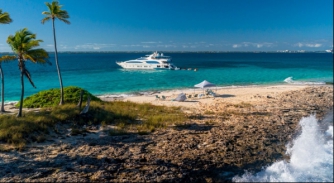
OneWater Marine reaches agreement to acquire Denison Yachting
This news of acquisition follows Denison Yachting's expansion into Europe at the tail end of 2021
Business
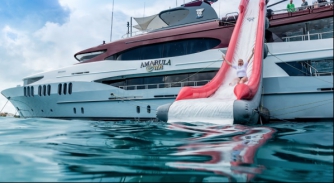
Bi-weekly brokerage analysis
While numbers of sales and combined value have fallen, the brokerage market continues to perform admirably
Fleet
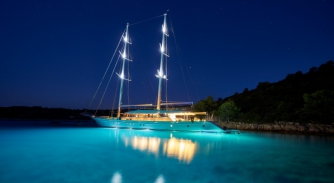
Making or breaking a charter
We speak with Caroline Antlett of Northrop & Johnson about what attracts long-term repeat clients
Crew

A bite-sized guide to the ‘perfect’ charter yacht
What are the essential elements of a charter yacht that appeal to clients?
Owner
NEW: Sign up for
SuperyachtNewsweek!
Get the latest weekly news, in-depth reports, intelligence, and strategic insights, delivered directly from The Superyacht Group's editors and market analysts.
Stay at the forefront of the superyacht industry with SuperyachtNewsweek


